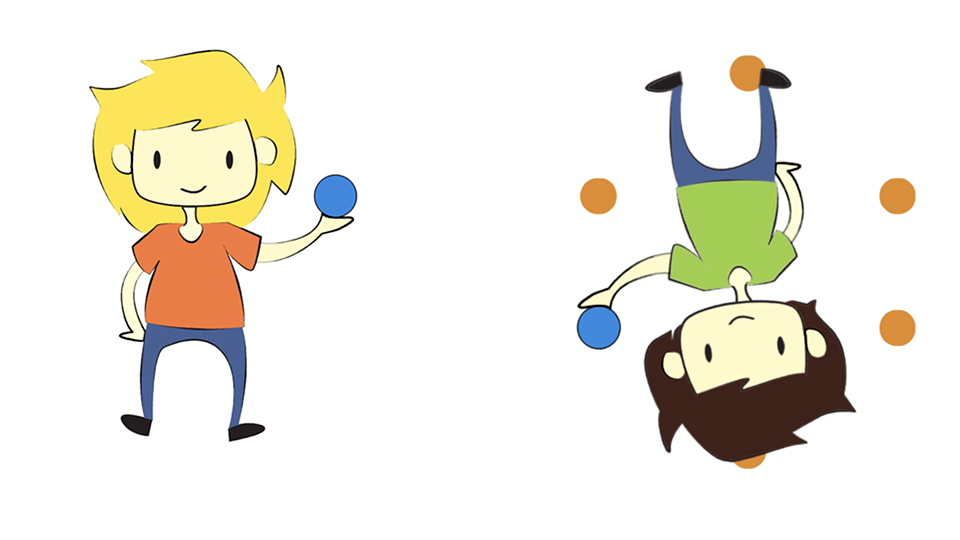New working memory test aids teaching and research
Primary page content
A new online test of working memory aims to help educators and improve the quality of international research collaborations studying the links between working memory and ADHD, creativity, anxiety and other psychological phenomena.

The Jack & Jill Working Memory Test requires the processing of the rotation of two cartoon characters while memorising the position of a ball in Jack’s hand
Building individual learning trajectories for school pupils can help improve academic achievement but in order to build such trajectories, educational psychologists and teachers need valid measures of a pupil’s current cognitive characteristics.
One such characteristic is working memory – an ability to store information relevant for the task at hand in the memory for a short time. Sometimes called ‘the brain’s conductor’, working memory has a vital role in human learning.
Yet finding an accessible, reliable and accurate means of measuring working memory suitable for different ages, genders, and national demographics has been a challenge.
The Jack & Jill Working Memory Test is a free, open access, test created by an international group of researchers, including Professor Daniel Müllensiefen and Professor Yulia Kovas at Goldsmiths, University of London (UK) and colleagues at Tomsk State University (Russia), the Max-Planck-Institute of Empirical Aesthetics (Germany), ITMO University (Russia) and Macquarie University (Australia).
The test uses a very simple task which is appealing to children and adults alike. The task requires the processing of the rotation of two cartoon characters, Jack and Jill, while memorising the position of a ball in Jack’s hand.
A study published today (27 January 2022) in the scientific open-access journal PLOS ONE explains how Jack & Jill was developed and validated through a number of trials.
The results clearly show the positive links between working memory and non-verbal intelligence, spatial ability, and achievement in mathematics and languages.
One trial undertaken during development demonstrated that the test can be used to distinguish between adolescents with high achievement in STEM subjects and their peers with expertise in non-STEM fields.
Professor of Psychology at Goldsmiths, Daniel Müllensiefen said: “The importance of working memory and visuospatial working memory is extensively recognised, yet we could not previously find any open-source, free and reliable tests readily available to educational psychologists and practitioners. After extensive trials with hundreds of participants of different ages and nationalities, Jack & Jill emerged as an accessible and reliable way to test working memory.”
Professor of Genetics and Psychology at Goldsmiths, Yulia Kovas, said: "The test has been developed to be adaptive - it adapts quickly to the ability level of participants, be they children, adults or memory champions. As a result, the test is engaging for participants because it avoids stimuli that are too difficult or too easy for them. This makes the test widely applicable for research and education with different audiences."
The Jack & Jill Working Memory Test has been calibrated and validated for use in research and in practice with adolescents and adults.
The test can aid cross-cultural research as it has already been validated with participants from the UK, Australia and Russia, and is currently also being deployed in an international study on musical and cognitive development in Germany, Italy and the UK.
Given that the test is digital, free, open source, and visual – with instructions available in multiple languages - it can easily be used by researchers or educational practitioners across the world.
A demo and the source code of the Jack & Jill Working Memory Test are available at: https://github.com/klausfrieler/JAJ
The Jack and Jill Adaptive Working Memory Task: Construction, Calibration and Validation by Sebastian Silas, Elina Tsigeman, Klaus Frieler, Maxim Likhanov, Rebecca Gelding, Yulia Kovas and Daniel Müllensiefen was published in PLOS ONE on Thursday 27 January 2022.